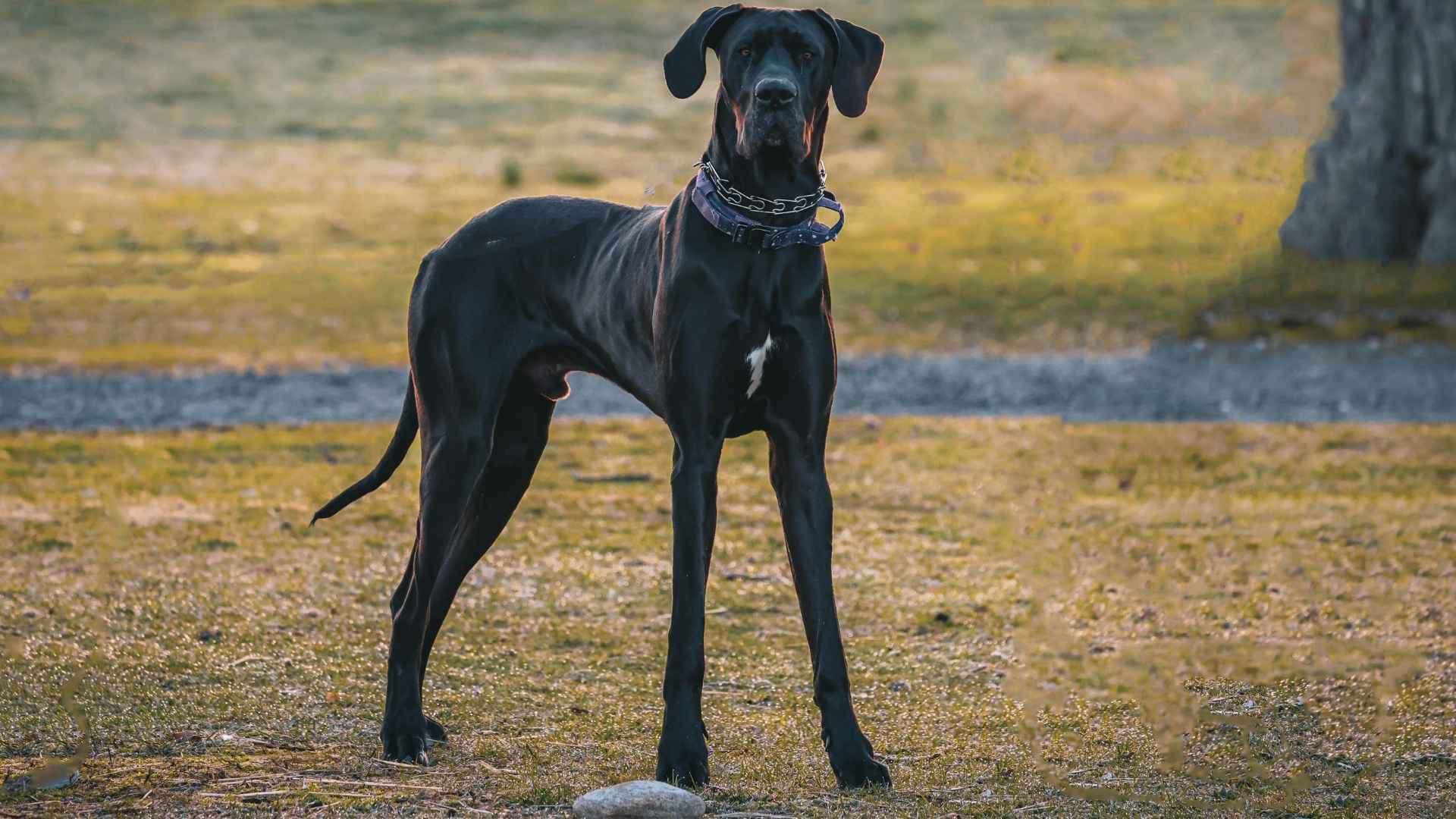When it comes to guardianship, companionship, and sheer presence, few can match the commanding stature of giant dog breeds. From sprawling farmsteads to spacious suburban homes, giant breeds bring both watchful eyes and tender hearts into the households that love them.
But owning one of these colossal canines isn’t for the faint of heart. Their size alone means more food, more space, and more strength, so training and socialization are essential from the start. Yet for those who can meet their needs, giant breeds can be some of the most rewarding pets around.
While often imposing in stature, these dogs are not simply about muscle. Many are known for their intelligence, intuition, and deep bond with their humans. Whether guarding your home or lounging by your feet, these vigilant companions are built to watch over what matters most.
In this article, we spotlight seven giant dog breeds that are not only massive but also remarkably alert, making them excellent choices for families seeking both presence and protection.
Alert Giant Dog Breeds
1. Saint Bernard
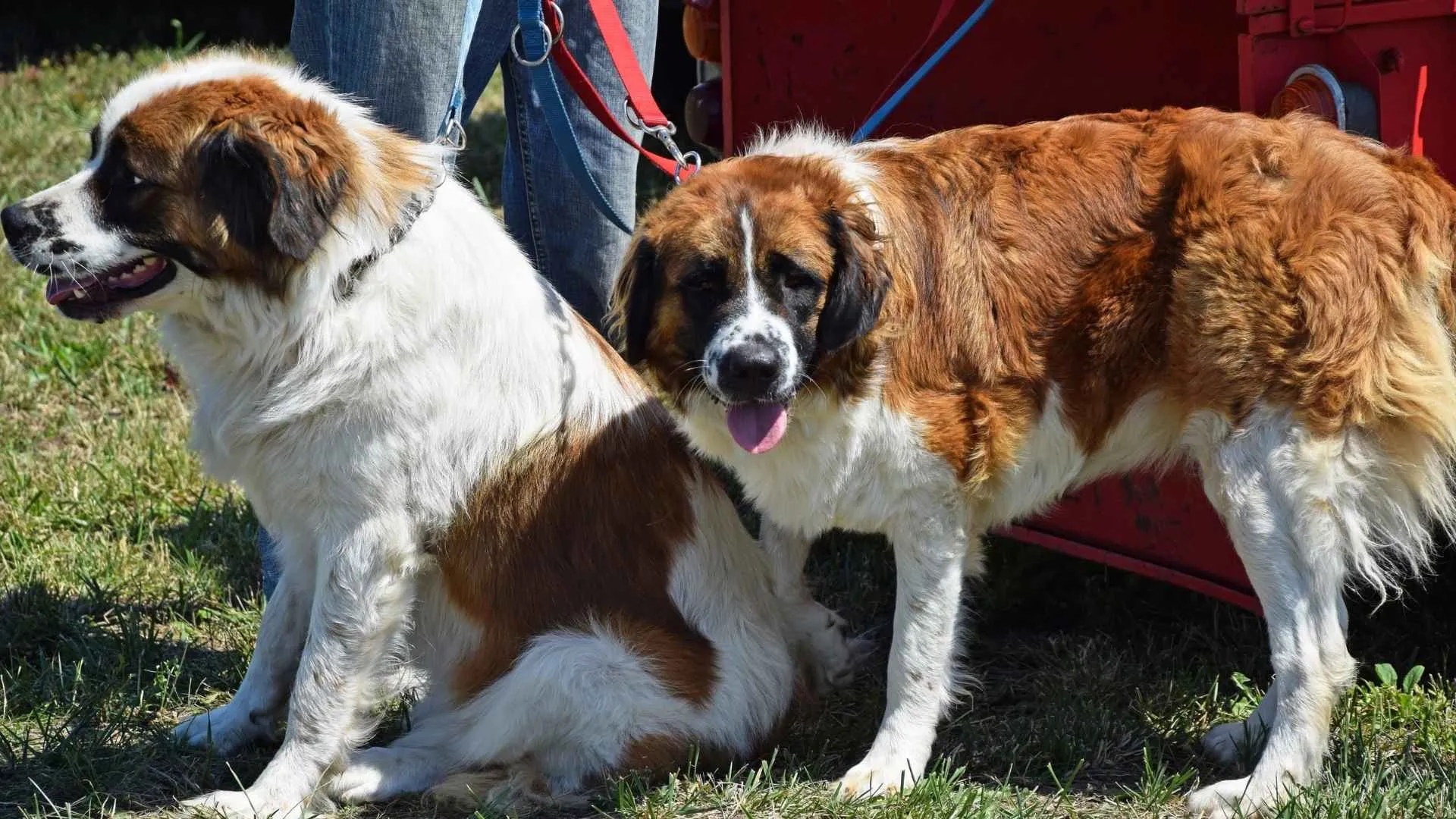
The Saint Bernard is one of the most recognizable giant breeds, renowned for its alpine rescue legacy and warm-hearted temperament. Originally bred by Swiss monks to locate and aid stranded travelers in the snowy Alps, this breed developed a natural alertness and a strong protective instinct.
Purina states that despite their size, Saint Bernards are famously gentle and affectionate, especially with children. Their calm and steady presence makes them ideal for families, and they are deeply loyal to their humans. Though friendly, they have a strong guarding nature and won’t hesitate to stand between their family and a threat.
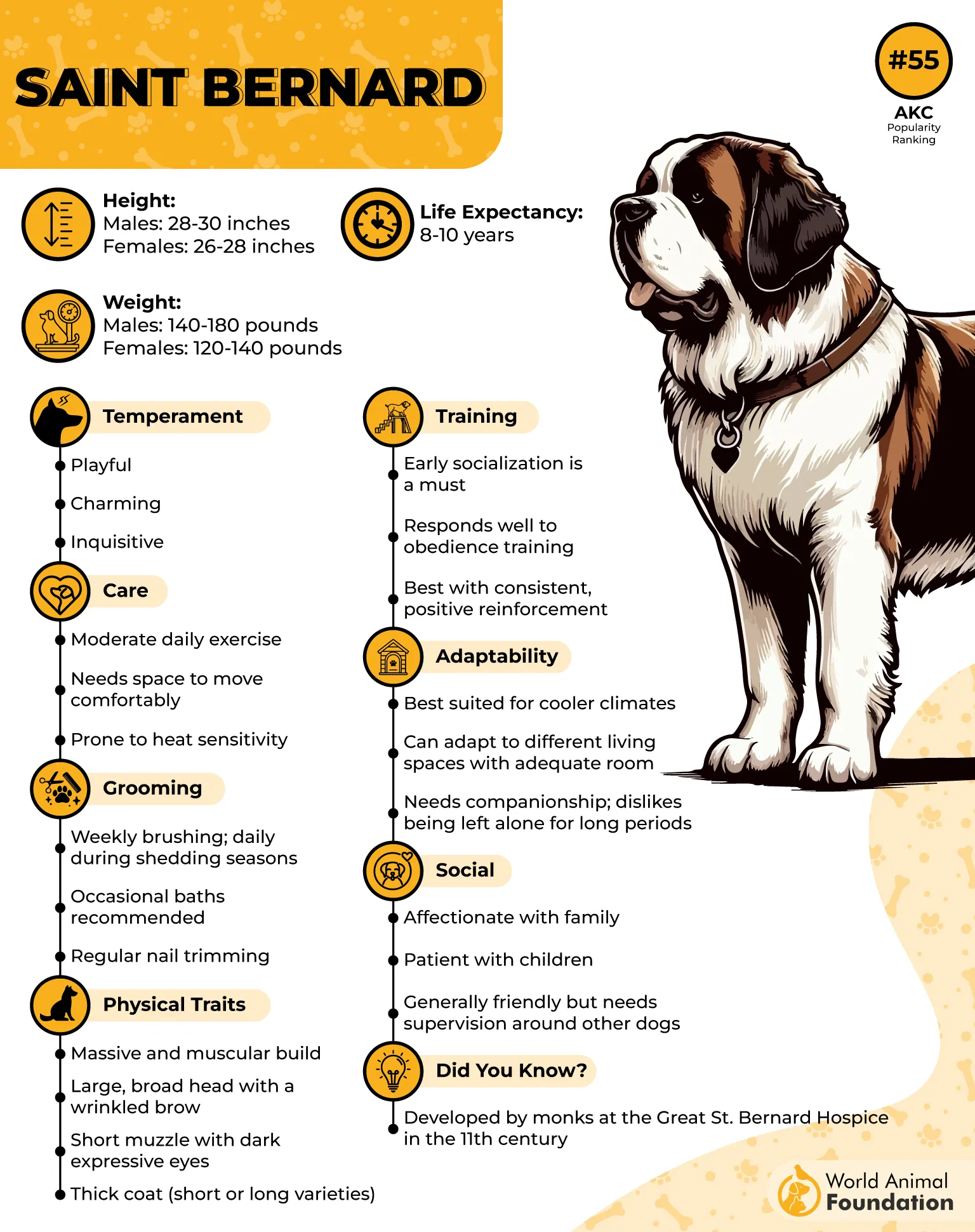
They are not excessive barkers, but their deep voice carries authority when used. While not aggressive, they remain observant and wary of strangers, often acting as silent sentinels with a powerful presence that few would dare to challenge.
Grooming is manageable but important. Their thick double coat needs regular brushing, especially during shedding seasons, and their drooling is considerable, something prospective owners should be ready for.
Training a Saint Bernard early is crucial due to their strength and sheer size. They are intelligent and eager to please, but may be slow to mature. With consistency and positive reinforcement, they grow into dependable, alert, and loving companions who naturally guard their home.
2. Leonberger
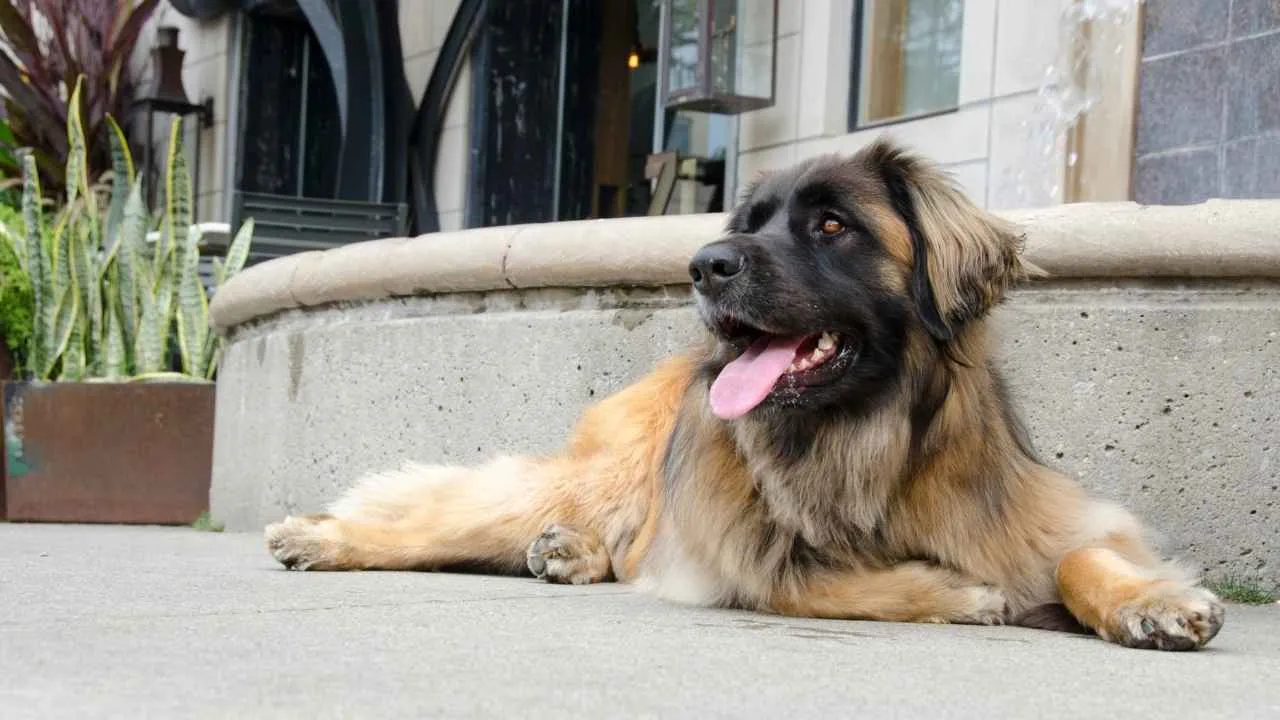
With its striking lion-like mane and gentle spirit, the Leonberger embodies both strength and softness. Originally bred in 19th-century Germany, this breed was designed to resemble the lion on Leonberg’s crest, and it lives up to that symbolism with dignity and heart.
Leonbergers are intuitive and emotionally responsive, making them excellent pets for families, especially those with children. They’re not quick to bark or react, but their steady presence and keen awareness allow them to be quietly vigilant in the home.
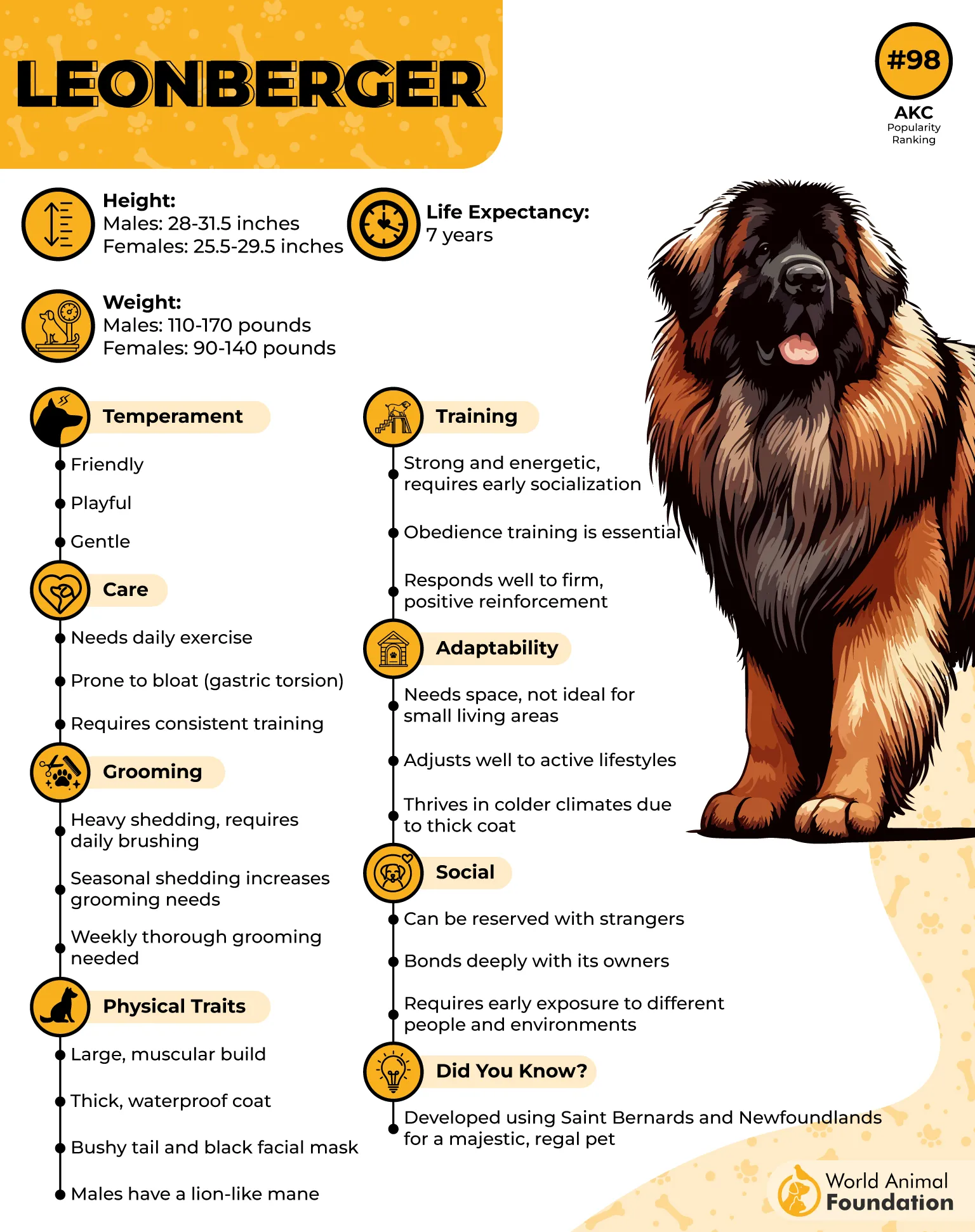
These dogs form strong bonds with their people and often follow them around the house like a furry shadow. While affectionate, they remain polite and well-mannered with strangers when properly socialized early in life.
Their thick double coat requires regular grooming, especially during seasonal shedding periods. Brushing several times a week helps prevent mats and keeps their coat in top shape.
Leonbergers enjoy a balanced life of movement and rest. They’re not overly excitable but do need daily activity, long walks, play sessions, or even cart pulling to keep them mentally and physically fulfilled.
3. Tibetan Mastiff
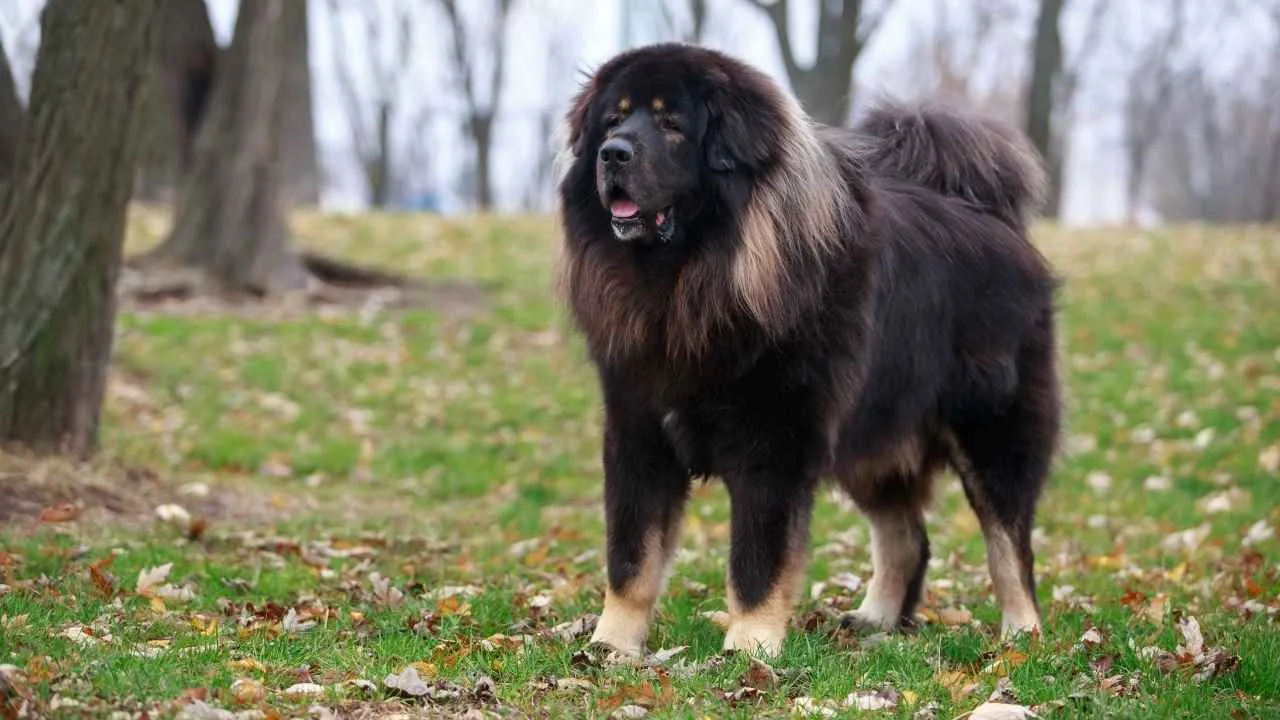
Majestic and resolute, the Tibetan Mastiff is an ancient mountain guardian with a commanding presence. Bred in the Himalayas to protect livestock and monasteries, this breed retains an air of independence and deep territorial instincts.
These dogs are naturally aloof and wary of strangers, preferring to observe quietly before deciding if someone belongs. Their instincts sharpen at night, when they’re most likely to patrol, bark, and guard their home with intense focus.
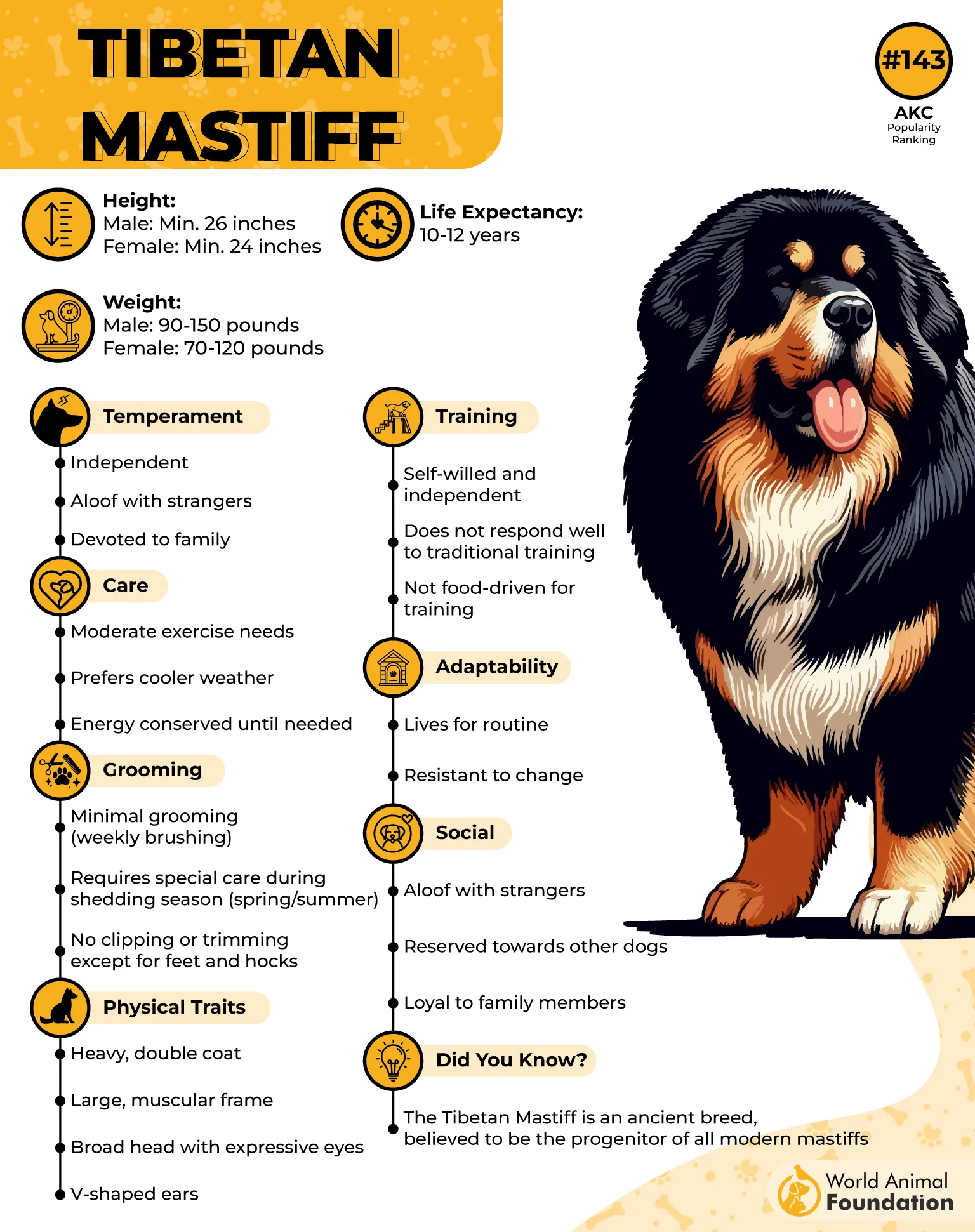
While deeply loyal to their families, Tibetan Mastiffs are not eager to please by nature. They require confident handling, early socialization, and firm yet respectful training to thrive in a domestic setting.
Despite their massive, fluffy appearance, they’re surprisingly low-maintenance for most of the year. Weekly brushing is sufficient outside of shedding season, when their undercoat drops heavily and needs extra care.
Exercise should be gentle during puppyhood to avoid stressing developing joints. Mature adults benefit from daily walks and low-impact activity. This breed is best suited for experienced owners who understand guardian breeds and can offer strong, consistent leadership.
4. Irish Wolfhound
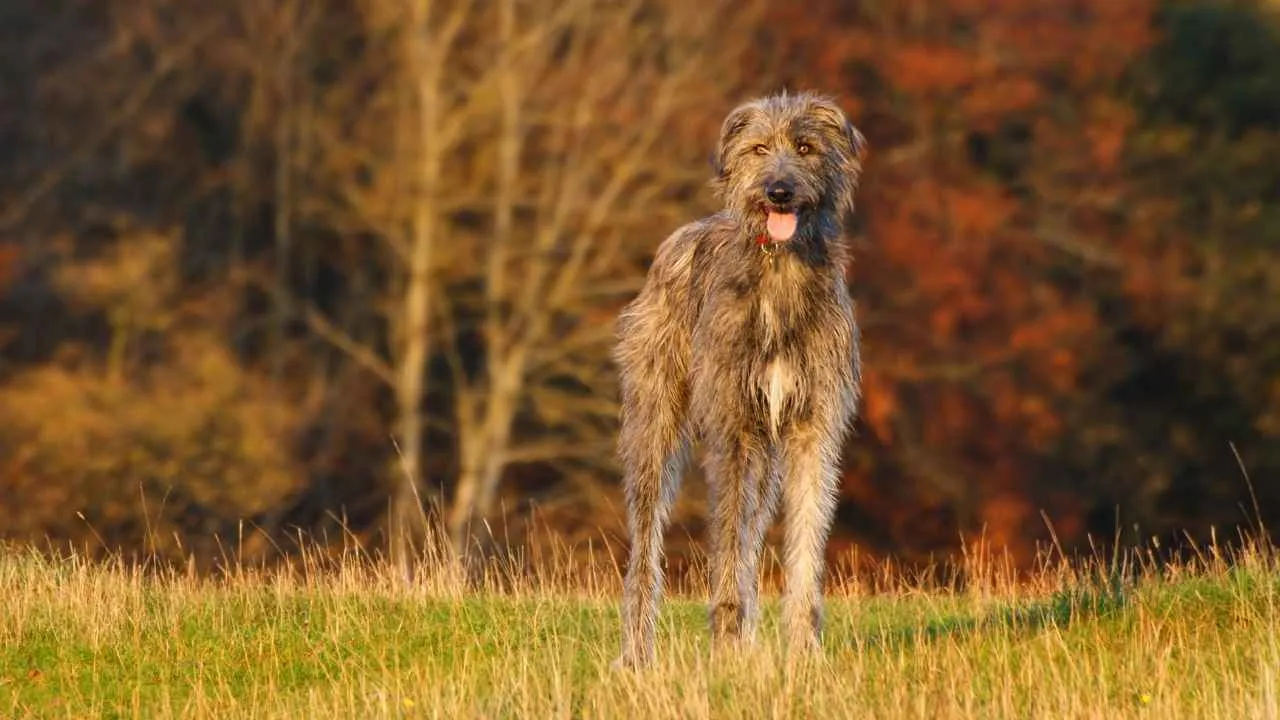
The Irish Wolfhound, towering and serene, is known for combining grace with impressive physical power. Originally used to hunt wolves and protect homes, they now stand as symbols of gentle loyalty and quiet companionship.
Despite being one of the tallest breeds, Wolfhounds are reserved and affectionate, often content with a soft bed and time near their humans. They’re especially good with children and tend to coexist peacefully with other dogs when raised in a social home.
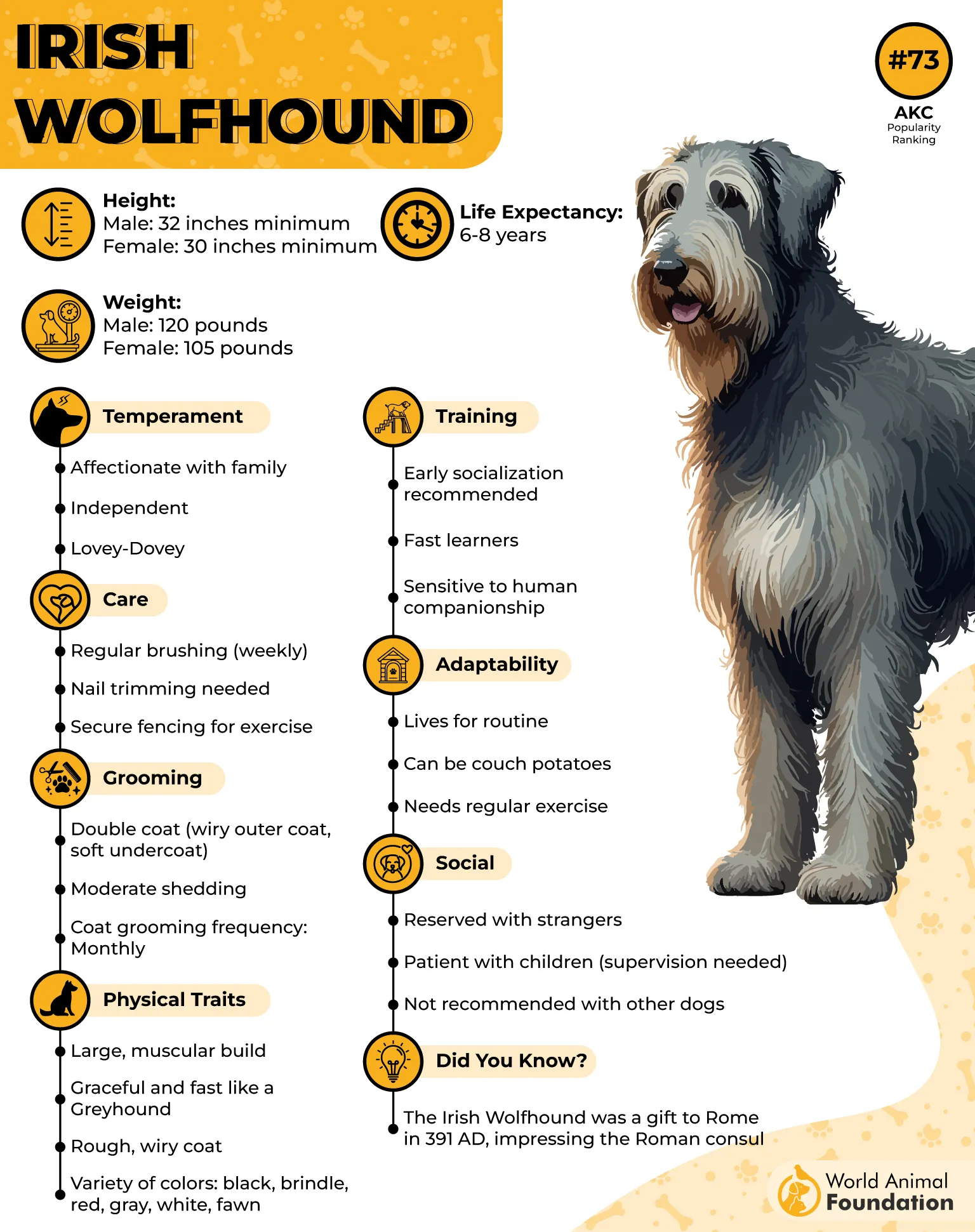
Their wiry double coat, seen in shades of gray, brindle, and wheaten, requires weekly brushing to keep it tidy. Shedding is mild but steady, and coat care is manageable with consistency.
According to WebMD, these dogs enjoy regular, moderate exercise. Walks and occasional sprints in secure spaces suit them well, though they prefer relaxation over endless activity. Their prey drive, however, means leash control is important in open areas.
Wolfhounds are prone to certain large-breed health risks, including heart disease and bone cancer. Though their lifespan is shorter than many breeds, their calm presence and gentle heart leave a lasting impact on the families who love them.
5. Great Dane
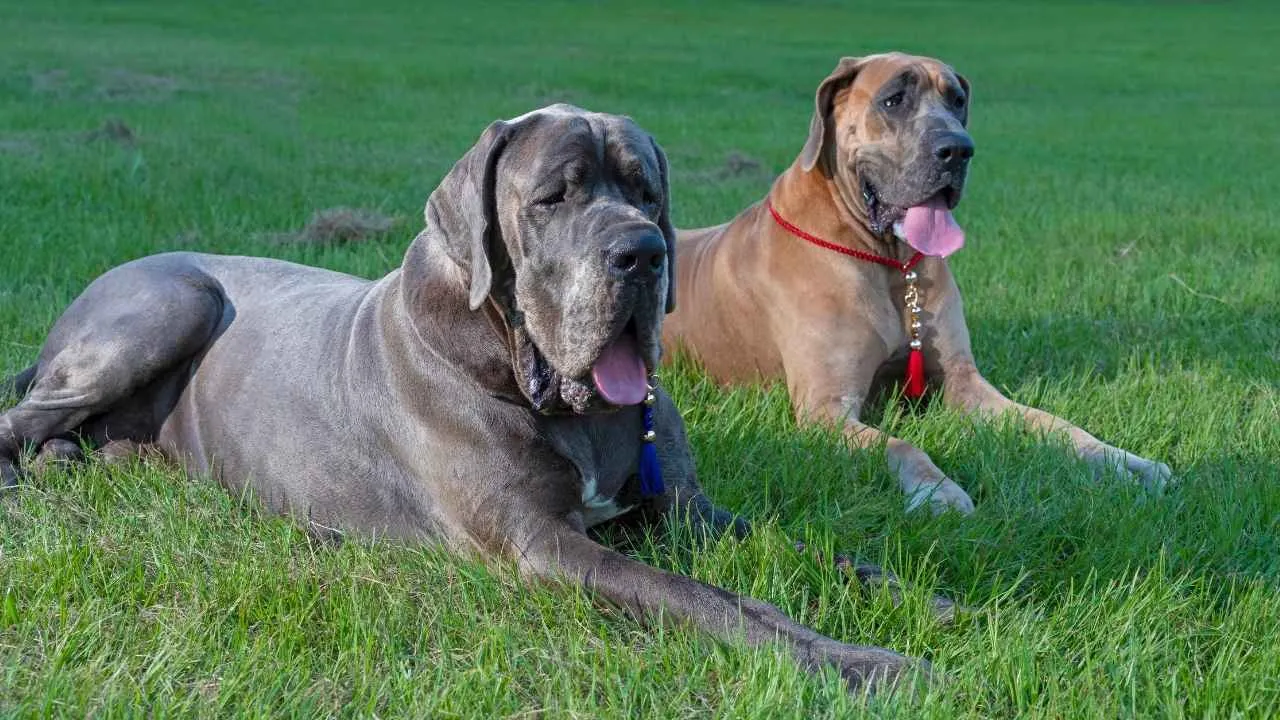
Often called the “Apollo of Dogs,” the Great Dane is a symbol of strength and elegance. Bred for boar hunting in Germany, it has evolved into a gentle, affectionate companion known for its dignified temperament.
Though physically imposing, Danes are emotionally sensitive and deeply bonded with their people. Britannica states that their affectionate nature and easygoing temperament make them ideal for families, though their size demands thoughtful supervision around small children.
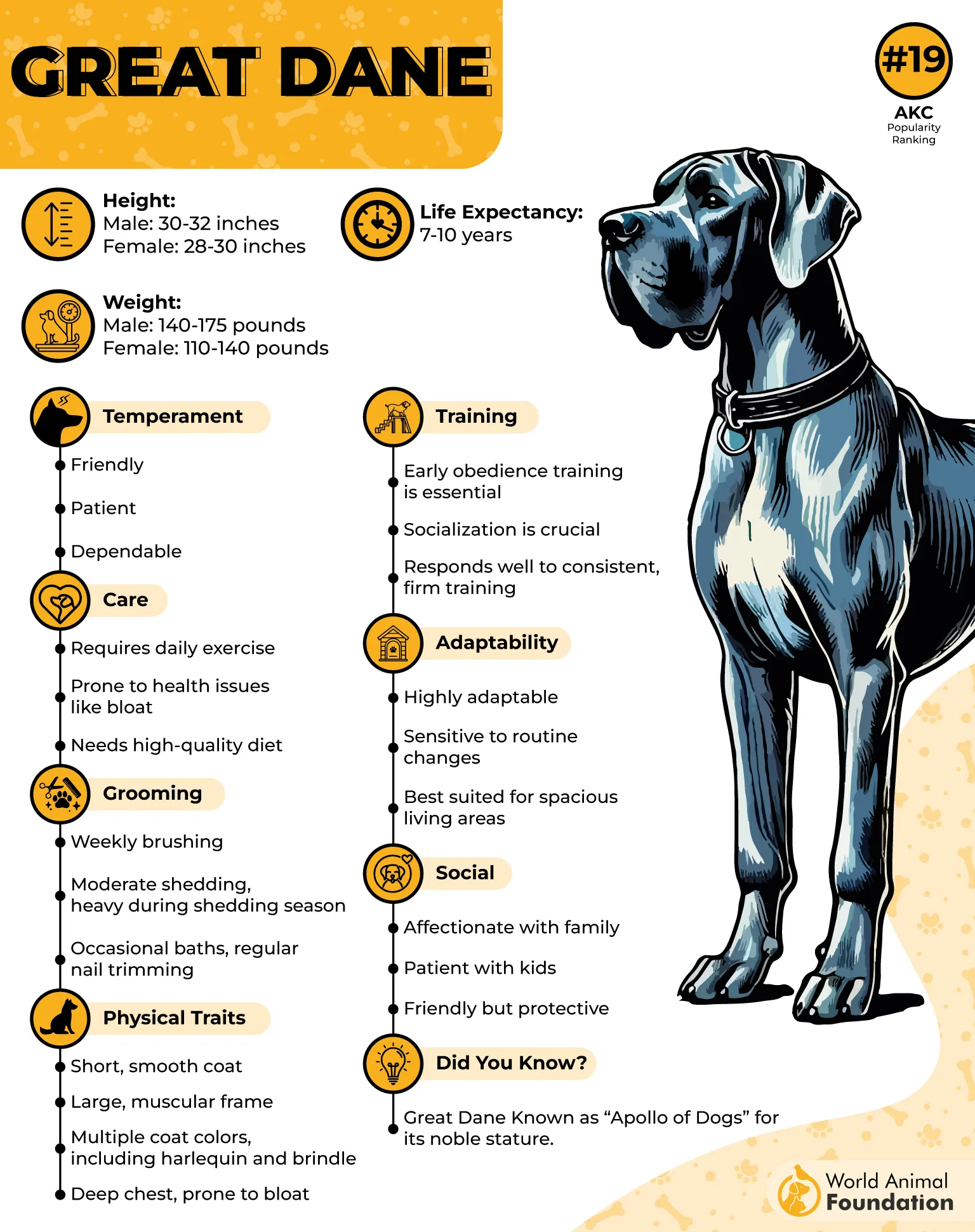
Their short, glossy coat comes in various colors, fawn, brindle, black, blue, harlequin, and requires minimal upkeep beyond weekly brushing. They do shed, but are relatively low-maintenance for a dog of their stature.
Moderate daily exercise keeps them healthy; long walks and calm play are ideal. To reduce the risk of bloat, owners should avoid heavy activity around mealtimes and opt for smaller, spaced-out meals.
While not naturally aggressive, their alertness and deep bark make them effective deterrents. With early training and socialization, the Great Dane is a loving and manageable giant that brings both presence and peace to any home.
6. Newfoundland
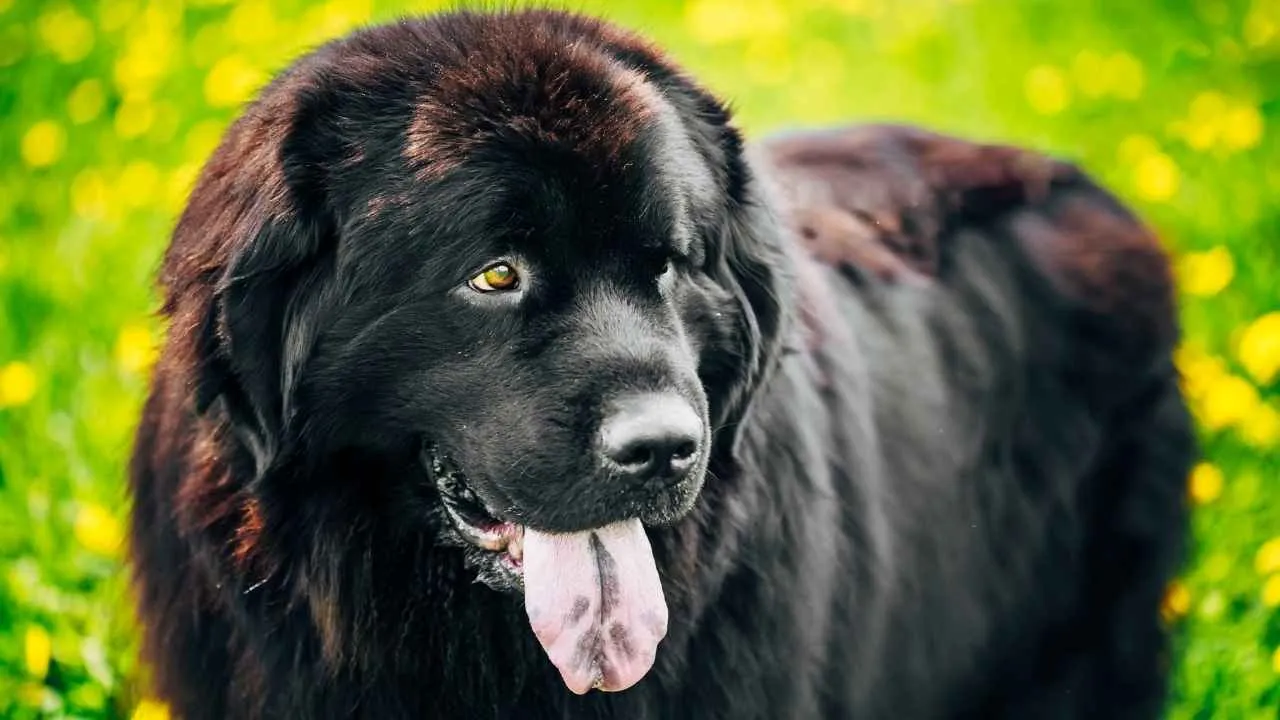
Nicknamed the “nanny dog,” the Newfoundland is as known for its patience and protectiveness with children as it is for its massive size. Despite their imposing appearance, Newfies are famously gentle, sweet-natured giants who prefer affection over intensity.
Their love for water is hardwired. Bred to assist Canadian fishermen in icy Atlantic waters, Newfoundlands have webbed feet, a thick double coat, and a natural instinct for rescue. It’s not just a party trick—they’ve saved real lives in real water emergencies.
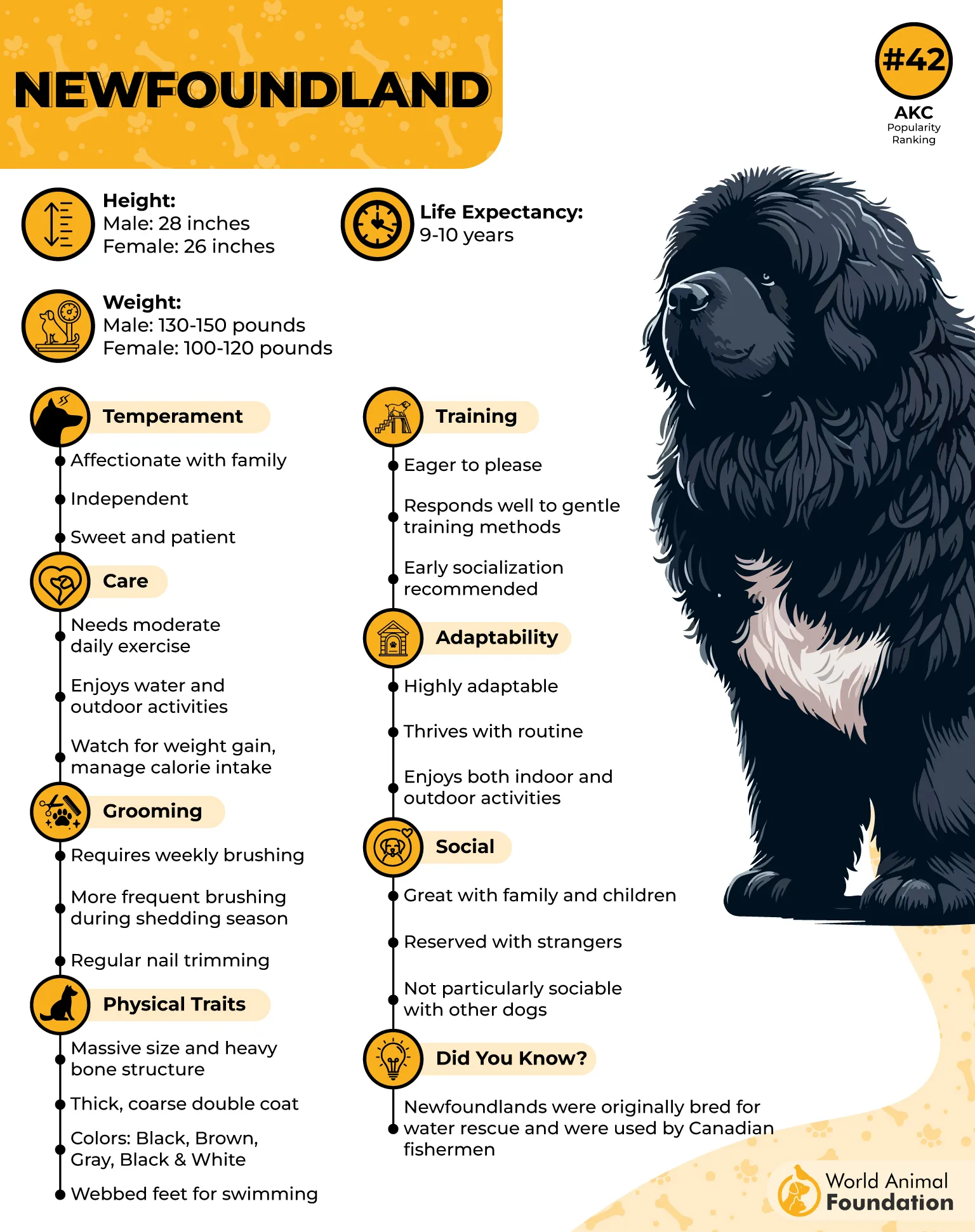
This is not a dog for fastidious, neat freaks. Their thick coats attract mud, water, and shed hair, and they’re prone to drooling after meals or drinks. But regular brushing, nail trimming, and ear care will go a long way in keeping them clean and comfortable.
While not high-energy, they still need consistent activity to stay in shape. Walks, swims, or light pulling tasks suit them best—Newfies mature slowly and should avoid heavy exercise as puppies. Too much strain early on can lead to joint issues later.
Health concerns include hip dysplasia, cystinuria (bladder stones), and subvalvular aortic stenosis, a heart condition. A quality diet, gentle exercise, and routine vet checks are key to ensuring their comfort through their relatively short lifespan. For those who can meet their size and grooming needs, Newfoundlands offer a calm, devoted presence unlike any other.
7. Bernese Mountain Dog
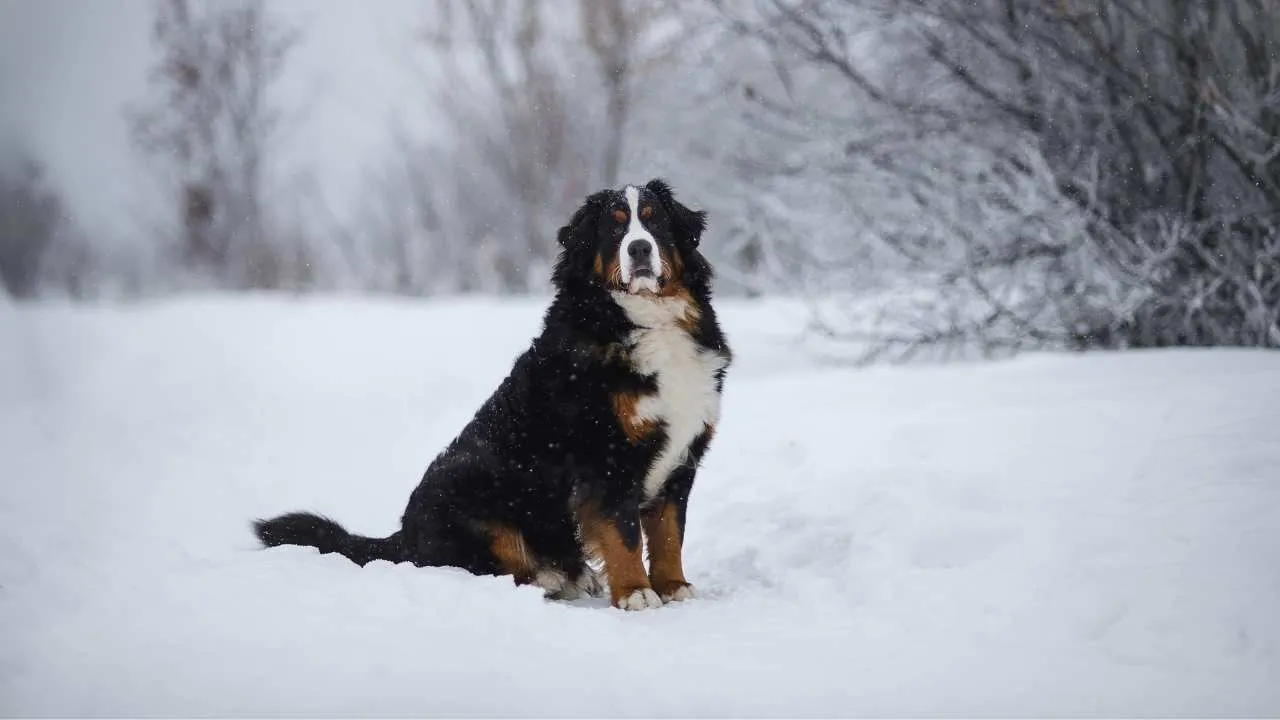
The Bernese Mountain Dog looks like it was painted by an artist, bold tricolor coat, soft eyes, and an expressive face that radiates warmth. But beneath that picturesque exterior lies a rugged history: these dogs once hauled carts and guarded farms in the Swiss Alps.
Today’s Berners may not be pulling milk wagons through mountain passes, but they still carry a working dog’s heart. They love having a job, whether that’s following their person around the house, playing fetch with kids, or learning commands in obedience class.
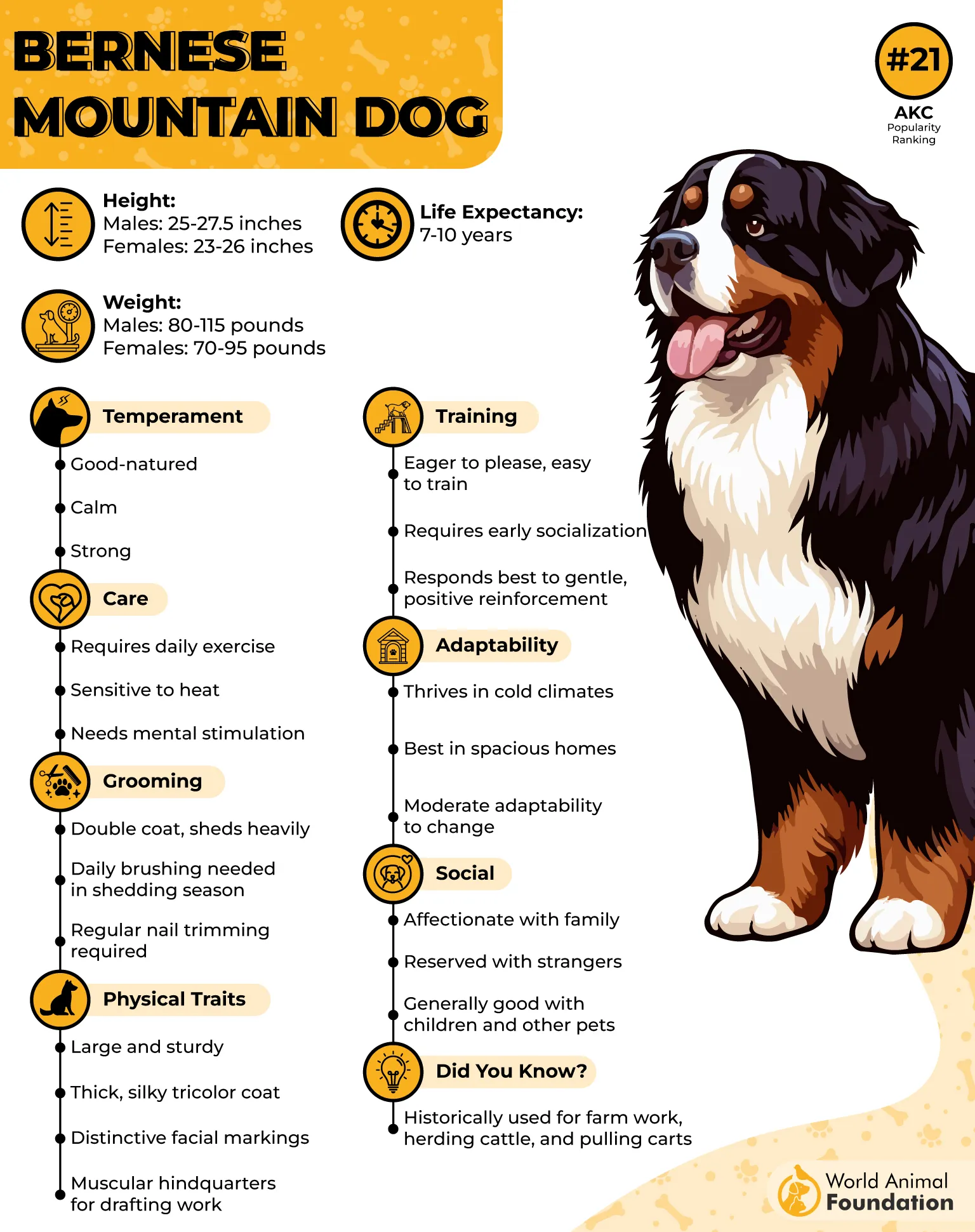
These dogs form deep emotional bonds and do best in households where someone is home most of the day. They’re naturally friendly and affectionate, especially with children, but they do need early socialization to develop confidence with strangers and other pets.
Their thick, double coat is beautiful, but be ready for tumbleweeds of fur. Berners shed year-round and even more during seasonal changes. Regular brushing, ear cleaning, and nail trimming are non-negotiables for keeping them healthy and happy.
Prone to several health issues, particularly cancer and joint conditions, Berners have a shorter lifespan than many other breeds. Still, their charm, loyalty, and gentle nature make every year with them deeply worthwhile.
Conclusion
The biggest dog breeds are more than just their impressive size; they’re loyal companions, vigilant guardians, and often, deeply affectionate family pets. Whether bred to hunt wild boars, guard livestock, or rescue those in danger, these dogs share a legacy of strength, intelligence, and purpose. From the Leonberger’s lion-like elegance to the Tibetan Mastiff’s fierce loyalty and the Irish Wolfhound’s towering grace, these breeds carry the weight of history with quiet dignity.
Despite their intimidating stature, many of these gentle giants are among the friendliest dogs you’ll meet, devoted, protective, and often more tolerant than some smaller breeds. Their sturdy builds, loose skin, or distinctive tri-coloured coats make them instantly recognizable, but it’s their temperament and bond with humans that leave a lasting mark.
Owning one of the largest dog breeds comes with challenges: higher food needs, health problems to monitor, and the necessity of early training. They need enough exercise, space to stretch out, and a home that understands their needs. But for those prepared, they offer something rare, even-tempered, immensely strong companions who watch over your world with quiet, noble devotion.
In the right home, these powerful dogs prove that big dogs often have the biggest hearts.


